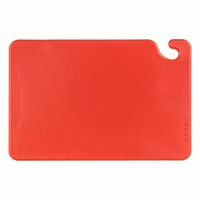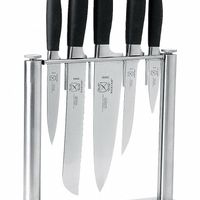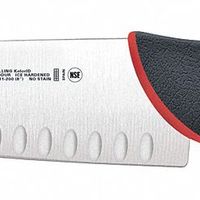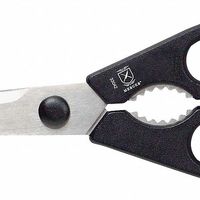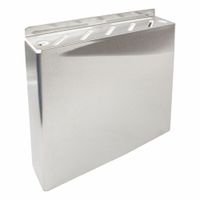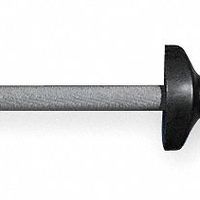Call +(254) 703 030 000 / 751 483 999 / 721 704 777
- Home
- Furnishings Appliances Hospitality
- Tableware Smallwares Food Service Storage Transport
- Kitchen Prepware Cutlery Cookware
- Food Service Cutlery Cutting Boards
.....Read More
Frequently Asked Questions
What are the essential types of kitchen knives needed for basic food preparation?
Chef's Knife: A versatile, all-purpose knife with a broad blade, typically 8-10 inches long, used for chopping, slicing, dicing, and mincing a variety of ingredients.
Paring Knife: A small knife with a 3-4 inch blade, ideal for peeling, trimming, and intricate work like deveining shrimp or hulling strawberries.
Serrated Bread Knife: A long knife with a serrated edge, perfect for slicing bread, cakes, and other baked goods without crushing them.
Utility Knife: A mid-sized knife, usually 4-7 inches long, used for tasks that are too large for a paring knife and too small for a chef's knife, such as slicing fruits and vegetables.
Boning Knife: A knife with a narrow, flexible blade, typically 5-6 inches long, designed for deboning meat, poultry, and fish.
Carving Knife: A long, thin knife used for slicing cooked meats, such as roasts, poultry, and ham, ensuring clean, even cuts.
Santoku Knife: A Japanese-style knife similar to a chef's knife, with a shorter, wider blade, used for slicing, dicing, and mincing.
Cleaver: A heavy, rectangular knife used for chopping through bones and tough vegetables, as well as crushing garlic.
Fillet Knife: A thin, flexible knife used for filleting fish, allowing for precise cuts and easy removal of skin.
Kitchen Shears: Scissors designed for kitchen use, useful for snipping herbs, trimming meat, and opening packaging.
These knives cover a wide range of kitchen tasks, making them essential for basic food preparation.
How do I properly sharpen and maintain kitchen knives?
1. **Choose the Right Tools**: Use a whetstone, honing rod, or electric sharpener. Whetstones offer the most control and precision.
2. **Sharpening with a Whetstone**:
- Soak the whetstone in water for about 10-15 minutes.
- Place the stone on a non-slip surface.
- Hold the knife at a 15-20 degree angle.
- Slide the blade across the stone, from heel to tip, applying even pressure.
- Repeat on the other side, maintaining the same angle.
- Use the coarse side first, then the fine side for polishing.
3. **Honing**:
- Use a honing rod to realign the blade edge.
- Hold the rod vertically, tip down on a stable surface.
- Hold the knife at a 15-degree angle.
- Draw the blade down and across the rod, alternating sides.
4. **Electric Sharpeners**:
- Follow the manufacturer's instructions.
- Typically involves pulling the knife through slots with pre-set angles.
5. **Regular Maintenance**:
- Hone knives regularly to maintain the edge.
- Sharpen with a whetstone or electric sharpener as needed, depending on usage.
6. **Proper Storage**:
- Use a knife block, magnetic strip, or blade guards to protect edges.
7. **Cleaning**:
- Hand wash knives with mild detergent and dry immediately.
- Avoid dishwashers as they can dull and damage blades.
8. **Usage Tips**:
- Use appropriate cutting boards (wood or plastic).
- Avoid cutting on hard surfaces like glass or stone.
9. **Safety**:
- Always cut away from your body.
- Keep knives sharp to reduce the risk of accidents.
What is the best way to store kitchen knives to prevent dulling?
The best way to store kitchen knives to prevent dulling is to use a knife block, magnetic strip, or knife guard.
1. **Knife Block**: A knife block is a popular choice as it keeps knives organized and protected. Ensure the block has horizontal slots to prevent the blades from resting on their edges, which can cause dulling. Clean the block regularly to prevent bacteria buildup.
2. **Magnetic Strip**: A magnetic strip mounted on the wall is an excellent space-saving option. It keeps knives accessible and prevents them from rubbing against each other. Ensure the strip is strong enough to hold the knives securely and place it away from moisture to prevent rusting.
3. **Knife Guard**: Knife guards or sheaths are ideal for those who store knives in drawers. They protect the blade from contact with other utensils, reducing the risk of dulling. Choose guards made from durable materials like plastic or silicone.
4. **Drawer Insert**: A knife drawer insert is another option for drawer storage. It keeps knives separated and secure, preventing them from knocking against each other. Look for inserts with angled slots to maintain the sharpness of the blades.
5. **Avoid Dishwasher**: Regardless of storage method, avoid washing knives in the dishwasher. The high heat and harsh detergents can damage the blade and handle, leading to dulling.
6. **Regular Maintenance**: Regularly hone and sharpen your knives to maintain their edge. Use a honing steel for daily maintenance and a whetstone or professional sharpening service for more thorough sharpening.
By choosing the right storage method and maintaining your knives properly, you can significantly extend their lifespan and keep them sharp.
How do I choose the right cutting board for my kitchen?
1. **Material**: Choose between wood, plastic, bamboo, or composite. Wood is durable and gentle on knives but requires more maintenance. Plastic is affordable and dishwasher-safe but can harbor bacteria in deep cuts. Bamboo is eco-friendly and harder than wood, which can dull knives. Composite boards offer a balance of durability and knife-friendliness.
2. **Size**: Consider your kitchen space and typical food prep needs. A larger board provides more workspace but requires more storage space. Ensure it fits comfortably on your countertop and in your sink or dishwasher if applicable.
3. **Thickness**: Thicker boards are more stable and durable but heavier. Thinner boards are lighter and easier to store but may warp over time.
4. **Maintenance**: Wood boards need regular oiling to prevent drying and cracking. Plastic boards can be cleaned in the dishwasher. Bamboo requires less maintenance than wood but should still be oiled occasionally.
5. **Safety Features**: Look for boards with non-slip feet or edges to prevent slipping during use. Some boards have juice grooves to catch liquids from meats and fruits.
6. **Purpose**: Consider having separate boards for different tasks, such as one for raw meats and another for vegetables, to prevent cross-contamination.
7. **Budget**: Prices vary widely. Invest in a quality board that fits your needs and budget. A good cutting board can last for years with proper care.
8. **Aesthetics**: If the board will be displayed on your countertop, consider its appearance and how it matches your kitchen decor.
9. **Environmental Impact**: If sustainability is important, opt for eco-friendly materials like bamboo or boards made from recycled materials.
What are the differences between various knife steels and sharpeners?
Knife steels differ in composition, affecting hardness, toughness, corrosion resistance, and edge retention. High-carbon steels, like 1095, offer excellent edge retention and sharpness but are prone to rust. Stainless steels, such as 440C and VG-10, resist corrosion better but may require more frequent sharpening. Powder metallurgy steels, like S30V and S35VN, provide a balance of toughness, edge retention, and corrosion resistance, often used in high-end knives.
Sharpeners vary in design and material, influencing sharpening efficiency and ease of use. Whetstones, available in natural or synthetic forms, offer precise control and can sharpen a wide range of steels but require skill and maintenance. Diamond stones are durable and effective on hard steels, providing fast sharpening but can be aggressive. Ceramic rods are gentle, ideal for honing and maintaining an edge between sharpenings. Electric sharpeners offer convenience and speed, suitable for quick touch-ups but may remove more material than necessary. Pull-through sharpeners are user-friendly but can be less precise, potentially damaging the blade if used improperly.
How do I safely use kitchen shears for different tasks?
1. **Choose the Right Shears**: Use kitchen shears specifically designed for food preparation. Avoid using them for non-food tasks to maintain hygiene and sharpness.
2. **Grip and Handling**: Hold the shears with a firm grip, ensuring your fingers are safely away from the blades. Use the handle loops for better control.
3. **Cutting Techniques**:
- For herbs, hold the bunch firmly and snip with the shears.
- For poultry, use the shears to cut through joints and bones, applying steady pressure.
- For vegetables, use a chopping board to stabilize the item and cut with precision.
4. **Safety Precautions**:
- Keep fingers away from the cutting path.
- Use shears with a locking mechanism to keep them closed when not in use.
- Store shears in a safe place, out of reach of children.
5. **Cleaning and Maintenance**:
- Wash shears immediately after use with warm, soapy water.
- Dry thoroughly to prevent rust.
- Regularly sharpen the blades to maintain efficiency.
6. **Special Features**: Utilize additional features like bottle openers or nutcrackers if available, but ensure the shears are stable and secure during use.
7. **Avoid Cross-Contamination**: Use separate shears for raw and cooked foods or clean thoroughly between uses to prevent cross-contamination.
8. **Storage**: Store in a knife block or magnetic strip to protect the blades and prevent accidents.
9. **Regular Inspection**: Check for any damage or wear and replace if necessary to ensure safety and performance.
What are the benefits of using a knife rack or guard?
A knife rack or guard offers several benefits:
1. **Safety**: Both knife racks and guards help prevent accidental cuts. A knife rack keeps blades out of reach, while a guard covers the blade, reducing the risk of injury when handling or storing knives.
2. **Blade Protection**: Knife racks and guards protect the blade from damage. A rack prevents knives from clashing with other utensils, while a guard shields the blade from nicks and dulling, maintaining sharpness and prolonging the knife's lifespan.
3. **Organization**: Knife racks provide a designated space for each knife, keeping them organized and easily accessible. This reduces clutter in drawers and ensures that the right knife is always at hand.
4. **Hygiene**: Storing knives in a rack or with a guard minimizes contact with other surfaces, reducing the risk of cross-contamination. This is particularly important for maintaining kitchen hygiene and food safety.
5. **Space Efficiency**: Wall-mounted or magnetic knife racks save counter and drawer space, making them ideal for small kitchens. They keep knives visible and within reach without occupying valuable workspace.
6. **Aesthetic Appeal**: Knife racks can enhance kitchen decor. They come in various designs and materials, allowing them to complement the kitchen's style while displaying knives attractively.
7. **Portability**: Knife guards are particularly useful for transporting knives safely, whether for professional chefs or home cooks attending cooking classes or events. They ensure that knives remain secure and protected during transit.
8. **Versatility**: Knife racks can accommodate various knife sizes and types, while guards are available in different sizes to fit specific blades, offering flexibility in storage solutions.
Overall, knife racks and guards contribute to a safer, more organized, and efficient kitchen environment.
